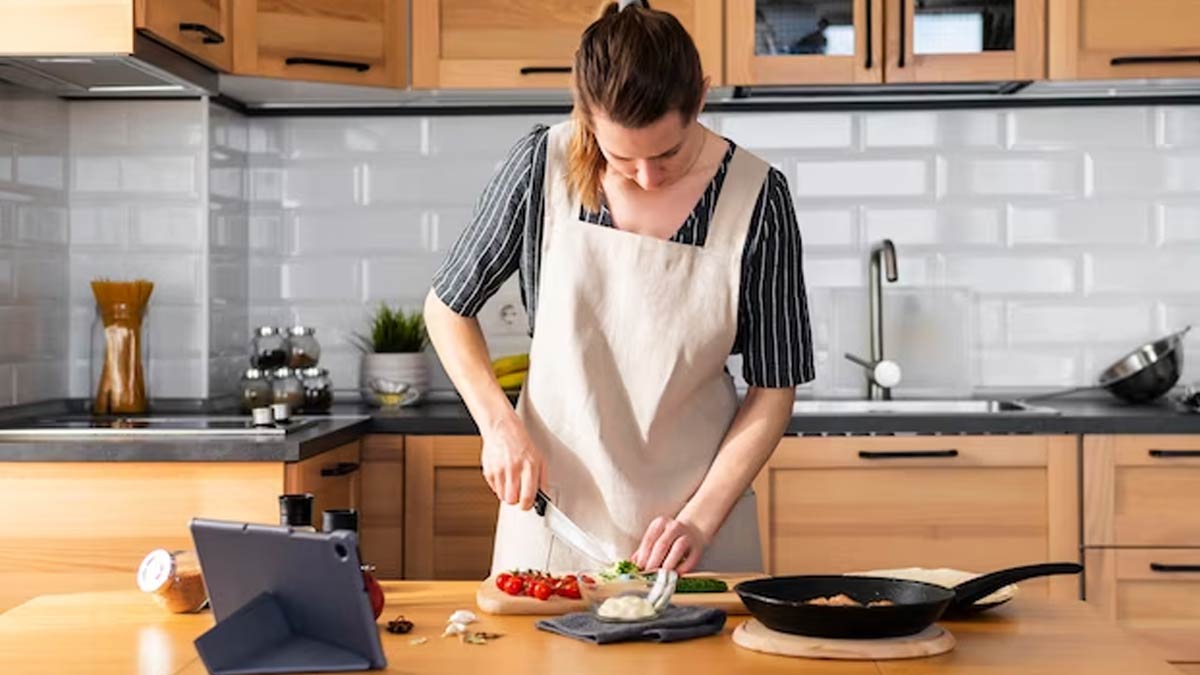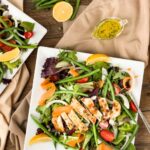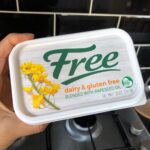Embark on a culinary adventure, transforming your kitchen into a haven of allergen-free delights! This guide unveils the secrets to crafting delicious and safe meals, even with the most restrictive dietary needs. Imagine vibrant, flavorful dishes bursting with texture and taste, all while ensuring the well-being of your loved ones. From mastering allergen-free baking techniques to preventing cross-contamination, we’ll equip you with the knowledge and confidence to create culinary masterpieces that are both satisfying and allergy-friendly.
We’ll explore essential pantry staples, delve into innovative substitutions for common allergens like gluten, eggs, and dairy, and provide step-by-step recipes for both savory and sweet dishes. Learn to adapt your favorite recipes, conquer common pitfalls, and create a kitchen environment that prioritizes safety and deliciousness. Get ready to elevate your cooking game and expand your culinary horizons, all while embracing the joy of allergen-free cooking.
Essential Pantry Staples for Allergen-Free Cooking
Stocking your pantry with the right allergen-free ingredients is the cornerstone of successful and delicious allergy-friendly cooking. Having these staples on hand allows for quick meal preparation and reduces the stress of constantly searching for suitable alternatives. This section details essential ingredients categorized by common allergens, enabling you to create a well-equipped and versatile allergen-free kitchen.
Essential Allergen-Free Pantry Staples
Building a well-stocked allergen-free pantry requires careful consideration of various dietary restrictions. The following list provides ten essential staples, categorized for clarity and ease of use, covering gluten-free, dairy-free, and nut-free needs.
- Gluten-Free Flour Blend (Gluten-Free): A versatile blend of rice flour, tapioca starch, and other gluten-free flours forms the base for many baked goods. Its mild flavor allows it to adapt to various recipes.
- Tapioca Starch (Gluten-Free, Dairy-Free, Nut-Free): This starch adds a smooth texture to sauces, puddings, and baked goods. Its neutral flavor complements sweet and savory dishes.
- Coconut Aminos (Gluten-Free, Dairy-Free, Nut-Free): A savory alternative to soy sauce, coconut aminos offer a rich umami flavor that enhances stir-fries, marinades, and dressings.
- Coconut Milk (Dairy-Free, Nut-Free): This creamy liquid adds richness to curries, soups, and desserts. Choose full-fat coconut milk for the creamiest results.
- Dairy-Free Butter (Dairy-Free): Numerous brands offer dairy-free butter alternatives made from various ingredients like coconut oil or plant-based oils. These are crucial for baking and adding richness to dishes.
- Sunflower Seed Butter (Nut-Free): A delicious and nutritious alternative to nut butters, sunflower seed butter offers a mild, slightly sweet flavor perfect for sandwiches, smoothies, and baking.
- Chia Seeds (Gluten-Free, Dairy-Free, Nut-Free): These tiny seeds are packed with nutrients and act as a binding agent in baking and a thickening agent in puddings and jams.
- Rice Vinegar (Gluten-Free, Dairy-Free, Nut-Free): A mild-flavored vinegar that adds a subtle tang to dressings, marinades, and Asian-inspired dishes.
- Nutritional Yeast (Gluten-Free, Dairy-Free, Nut-Free): This deactivated yeast adds a cheesy flavor to sauces, soups, and popcorn, making it a popular dairy-free cheese substitute.
- Arrowroot Powder (Gluten-Free, Dairy-Free, Nut-Free): A versatile thickening agent for sauces, gravies, and soups. It creates a smooth, clear consistency without altering the flavor significantly.
Infographic: Essential Allergen-Free Pantry Staples
Imagine a vibrant infographic, a colorful collage showcasing these ten essential ingredients. Each item is displayed in a separate, visually appealing box, possibly with a small, realistic image of the product. Beside each image, a short description highlights its versatility. For example, the coconut milk box might show a creamy coconut half with a caption like “Creamy base for curries, soups, and desserts.” The gluten-free flour blend could be shown alongside a loaf of bread with the caption, “Versatile base for cakes, cookies, and breads.” The overall design uses bright, natural colors, conveying a sense of freshness and health. The infographic’s layout is clean and easy to read, with a clear, bold title: “Your Allergen-Free Pantry Essentials.”
Comparative Analysis of Allergen-Free Flours
Different allergen-free flours possess unique properties impacting their suitability for various recipes. The table below compares several popular options.
| Flour Type | Properties | Best Uses | Considerations |
|---|---|---|---|
| Almond Flour | Dense, slightly sweet, high in fat | Cakes, muffins, cookies | Can be dry; often requires additional moisture |
| Coconut Flour | Very absorbent, slightly sweet, low in gluten | Muffins, pancakes (small amounts), breading | Requires significant liquid; can be gritty |
| Rice Flour (Brown/White) | Mild flavor, light texture | Cakes, pancakes, thickening agent | Can be gummy if overused; best in blends |
| Cassava Flour | Light and fluffy, neutral taste | Cakes, cookies, tortillas | Can be more crumbly than other flours; good in blends |
Mastering Allergen-Free Baking Techniques
Allergen-free baking presents unique challenges, demanding careful consideration of ingredient substitutions and adjustments to traditional methods. Success hinges on understanding how different allergens contribute to texture and structure, and then strategically replacing them with suitable alternatives. This section delves into the key differences between traditional and allergen-free baking, offering practical techniques and recipes for achieving delicious and satisfying results.
Allergen-free baking requires a shift in thinking from relying on gluten, eggs, and dairy for structure, leavening, and richness. Gluten, the protein in wheat, provides elasticity and chewiness. Eggs act as binders, leaveners, and emulsifiers, while dairy contributes richness, moisture, and tenderness. Substituting these requires understanding their individual roles and selecting appropriate replacements. For example, gluten-free flours often need additional binding agents like xanthan gum or psyllium husk. Flax eggs or applesauce can replace eggs, while dairy can be substituted with plant-based milks, yogurt alternatives, or even fruit purees, depending on the recipe’s needs. Careful measurement and attention to detail are paramount for achieving optimal results.
Allergen-Free Cake Baking Methods
Three distinct methods can yield light and fluffy allergen-free cakes: the creaming method, the reverse creaming method, and the oil-based method. Each offers a unique texture and requires specific ingredient considerations.
- The Creaming Method: This classic method involves creaming together butter (or a vegan alternative) and sugar until light and fluffy, incorporating air for a tender crumb. This method works well with many gluten-free flour blends.
- Cream together the vegan butter substitute and sugar until light and fluffy.
- Gradually add the wet ingredients (plant-based milk, vanilla extract), mixing until just combined.
- Incorporate the dry ingredients (gluten-free flour blend, baking powder, xanthan gum) gradually, mixing until just combined.
- Pour the batter into a prepared cake pan and bake according to the recipe’s instructions.
- The Reverse Creaming Method: This technique incorporates the dry ingredients into the wet ingredients, preventing overmixing and creating a tender crumb. It’s particularly useful for gluten-free baking, minimizing gluten-free flour development.
- Whisk together the dry ingredients (gluten-free flour blend, baking powder, xanthan gum).
- In a separate bowl, combine the wet ingredients (plant-based milk, oil, applesauce).
- Gradually add the wet ingredients to the dry ingredients, mixing until just combined. Avoid overmixing.
- Pour the batter into a prepared cake pan and bake according to the recipe’s instructions.
- The Oil-Based Method: This method utilizes oil instead of butter, resulting in a moister, more tender cake. It’s a versatile approach, easily adaptable to various allergen-free ingredients.
- Combine the wet ingredients (oil, plant-based milk, sugar, vanilla extract).
- Add the dry ingredients (gluten-free flour blend, baking powder, xanthan gum), mixing until just combined.
- Pour the batter into a prepared cake pan and bake according to the recipe’s instructions.
Allergen-Free Cookie Recipes
These three recipes showcase the versatility of different allergen-free flours. Each flour offers a unique texture and flavor profile, influencing the final cookie’s characteristics.
- Almond Flour Chocolate Chip Cookies: Almond flour provides a naturally sweet and slightly nutty flavor, creating a dense and chewy cookie.
- Preheat oven to 350°F (175°C).
- Cream together vegan butter and sugar until light and fluffy.
- Add almond flour, vanilla extract, and chocolate chips. Mix until just combined.
- Drop by rounded tablespoons onto a baking sheet and bake for 12-15 minutes, or until golden brown.
- Coconut Flour Oatmeal Raisin Cookies: Coconut flour absorbs a lot of liquid, creating a denser, more crumbly cookie. The combination with oats provides a hearty texture.
- Preheat oven to 350°F (175°C).
- Combine coconut flour, oats, baking soda, and salt.
- In a separate bowl, combine mashed banana, maple syrup, and vanilla extract.
- Add the wet ingredients to the dry ingredients, mixing until just combined.
- Stir in raisins.
- Drop by rounded tablespoons onto a baking sheet and bake for 15-20 minutes, or until golden brown.
- Rice Flour Peanut Butter Cookies: Rice flour produces a lighter, more delicate cookie. The peanut butter adds richness and flavor.
- Preheat oven to 350°F (175°C).
- Cream together vegan butter and sugar until light and fluffy.
- Add peanut butter, rice flour, baking soda, and salt. Mix until just combined.
- Roll into small balls and flatten slightly on a baking sheet.
- Bake for 10-12 minutes, or until edges are lightly browned.
Allergen-Free Savory Dishes

Creating delicious and satisfying meals without common allergens like gluten, dairy, soy, and nuts requires careful planning and creative techniques. This section explores flavorful allergen-free savory dishes, offering detailed recipes and addressing common challenges to empower you in your allergen-free culinary journey. We’ll cover essential techniques and provide solutions for common pitfalls, ensuring your meals are both healthy and delicious.
Allergen-Free Savory Recipes
This section presents five diverse allergen-free recipes, showcasing the versatility of allergen-free cooking. Each recipe is designed to be both flavorful and easy to follow, even for novice cooks.
Creamy Tomato Soup (Dairy-Free)
- Sauté one chopped onion and two cloves of minced garlic in 2 tablespoons of olive oil until softened.
- Add a 28-ounce can of crushed tomatoes, 4 cups of vegetable broth, 1 teaspoon of dried oregano, ½ teaspoon of dried basil, and a pinch of salt and pepper. Bring to a simmer.
- Simmer for 20 minutes, stirring occasionally.
- Blend the soup using an immersion blender or carefully in a regular blender until smooth.
- Stir in 2 tablespoons of nutritional yeast for a creamy texture and cheesy flavor.
- Garnish with fresh basil leaves before serving.
Lemon Herb Roasted Chicken and Vegetables
- Preheat oven to 400°F (200°C).
- Rinse and pat dry a whole chicken (approximately 3-4 pounds).
- In a small bowl, whisk together 2 tablespoons of olive oil, 1 tablespoon of lemon juice, 1 teaspoon of dried rosemary, 1 teaspoon of dried thyme, salt, and pepper.
- Rub the mixture all over the chicken, ensuring it’s evenly coated.
- Place the chicken in a roasting pan. Surround it with chopped carrots, potatoes, and onions.
- Roast for 1 hour and 15 minutes, or until the chicken is cooked through and the juices run clear when pierced with a fork. Internal temperature should reach 165°F (74°C).
Quinoa Salad with Roasted Vegetables
- Roast your favorite vegetables (such as bell peppers, zucchini, and eggplant) with olive oil, herbs, and spices at 400°F (200°C) for 20-25 minutes until tender.
- Cook 1 cup of quinoa according to package directions.
- While the quinoa is cooking, prepare a simple vinaigrette with 2 tablespoons of olive oil, 1 tablespoon of lemon juice, 1 teaspoon of Dijon mustard, salt, and pepper.
- Once the quinoa is cooked and cooled, combine it with the roasted vegetables and vinaigrette.
- Toss gently to combine. Garnish with fresh herbs if desired.
Coconut Curry Chickpea Stew
- Sauté one chopped onion, two cloves of minced garlic, and one inch of grated ginger in 2 tablespoons of coconut oil until softened.
- Add 1 tablespoon of curry powder, ½ teaspoon of turmeric, and a pinch of cayenne pepper (optional).
- Stir in 1 can (15 ounces) of chickpeas (drained and rinsed), 1 can (14.5 ounces) of diced tomatoes, 1 can (13.5 ounces) of full-fat coconut milk, and 1 cup of vegetable broth.
- Bring to a simmer and cook for 20 minutes, or until the sauce has thickened slightly.
- Season with salt and pepper to taste. Serve with rice or naan bread (ensure it’s allergen-free).
Garlic and Herb Roasted Potatoes
- Preheat oven to 400°F (200°C).
- Wash and chop 2 pounds of potatoes into bite-sized pieces.
- In a large bowl, toss the potatoes with 2 tablespoons of olive oil, 2 cloves of minced garlic, 1 teaspoon of dried rosemary, ½ teaspoon of dried thyme, salt, and pepper.
- Spread the potatoes in a single layer on a baking sheet.
- Roast for 30-40 minutes, or until the potatoes are tender and golden brown, flipping halfway through.
Addressing Common Pitfalls in Allergen-Free Savory Cooking
Avoiding blandness and achieving desirable textures are key challenges in allergen-free cooking. Here are solutions to common problems:
Many allergen-free cooks encounter issues with bland flavors and undesirable textures. Careful ingredient selection and mindful cooking techniques are essential to overcome these challenges.
- Bland Flavors: Use a variety of herbs, spices, and flavorful liquids (like vegetable broth or coconut milk) to boost the taste of your dishes. Don’t be afraid to experiment with different flavor combinations.
- Dry Textures: Add moisture to dishes using liquids like broth, coconut milk, or even pureed vegetables. Consider using binding agents like flaxseed meal or applesauce to improve the texture of baked goods or meatloaf.
- Grainy Textures: Ensure that ingredients like nuts and seeds are finely ground or processed if used as substitutes. Over-processing can lead to a pasty texture; under-processing results in a grainy texture.
- Sticky Textures: If a dish is too sticky, you might need to adjust the liquid-to-solid ratio or add a small amount of starch (like arrowroot powder or tapioca starch) to help thicken it.
Flavorful Allergen-Free Sauces and Dressings
This table showcases diverse allergen-free sauces and dressings, catering to various dietary needs.
| Sauce/Dressing | Base | Flavor Profile | Dietary Notes |
|---|---|---|---|
| Dairy-Free Ranch | Cashew cream (soaked cashews blended with water) | Tangy, herbaceous | Vegan, Gluten-Free, Nut-Free (if using sunflower seed butter instead) |
| Lemon-Herb Vinaigrette | Olive oil, lemon juice | Bright, citrusy, herbaceous | Vegan, Gluten-Free, Dairy-Free, Nut-Free |
| Spicy Peanut Sauce (Peanut-Free Option Available) | Sunflower seed butter or tahini | Savory, spicy, nutty (or subtly nutty if using sunflower seed butter) | Vegan, Gluten-Free (check for gluten-free tamari), Soy-Free (if using sunflower seed butter) |
| Creamy Tomato Sauce | Crushed tomatoes, vegetable broth, nutritional yeast | Savory, slightly tangy | Vegan, Gluten-Free, Dairy-Free, Nut-Free |
With newfound confidence and a pantry stocked with allergen-free essentials, you’re now ready to confidently navigate the world of allergy-conscious cooking. The journey from apprehensive to accomplished allergen-free chef is filled with exciting discoveries and flavorful triumphs. Remember, every delicious meal is a testament to your culinary prowess and commitment to safe and satisfying food. So, embrace the challenge, experiment with flavors, and savor the joy of creating allergen-free meals that delight both the palate and the soul. Happy cooking!
Q&A
What are the most common allergens?
The most common allergens include milk, eggs, peanuts, tree nuts, soy, wheat, fish, and shellfish.
Can I use regular baking powder in allergen-free baking?
Many baking powders contain wheat or dairy derivatives. Always check labels and opt for certified allergen-free baking powder.
How long can I store allergen-free baked goods?
Storage times vary depending on the recipe and ingredients, but generally, allergen-free baked goods should be stored properly in airtight containers at room temperature or in the refrigerator to maintain freshness and prevent spoilage.
How do I clean my kitchen to prevent cross-contamination?
Thoroughly wash and sanitize all surfaces, utensils, and cookware that have come into contact with allergens. Use separate cutting boards and utensils for allergen-free foods.


